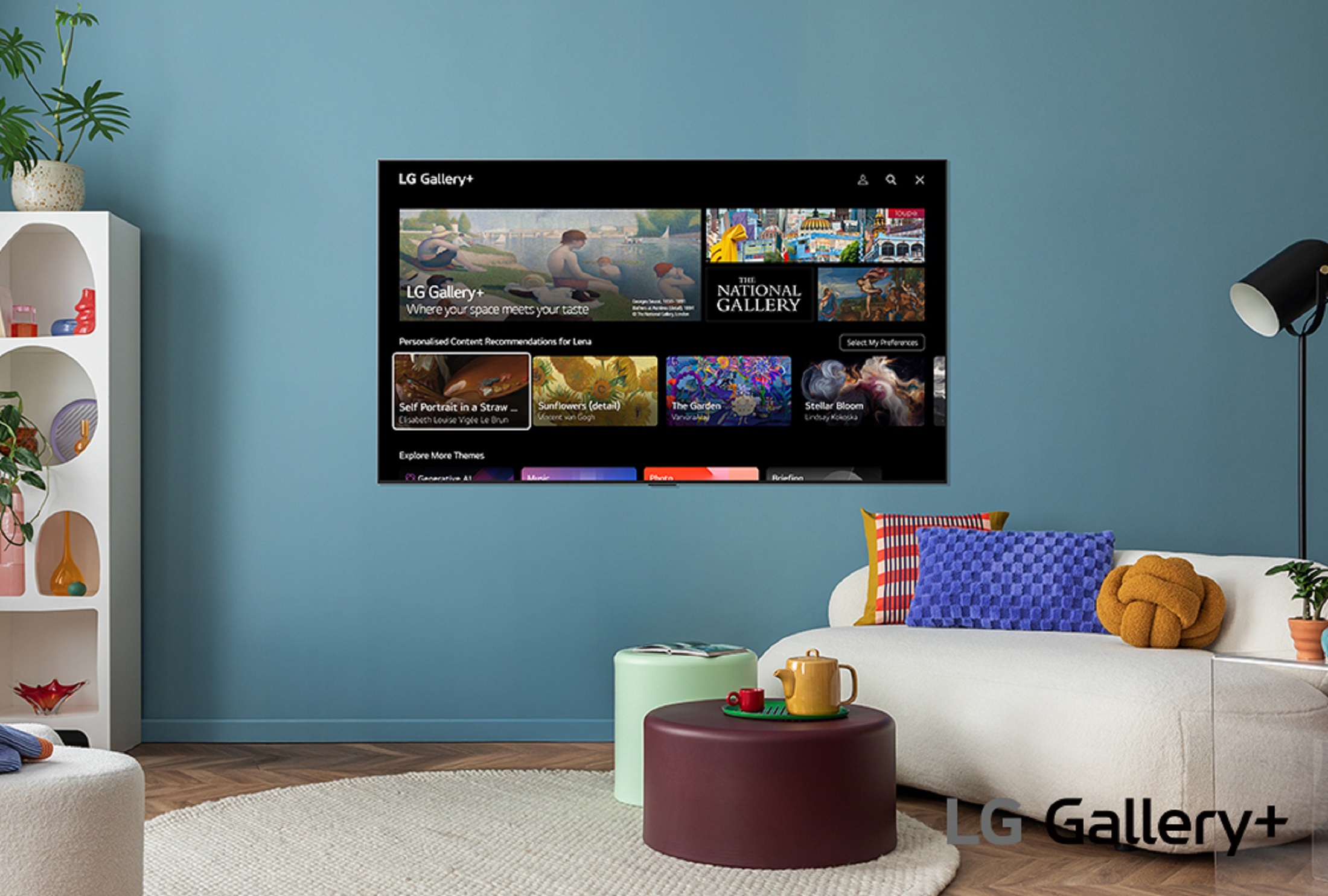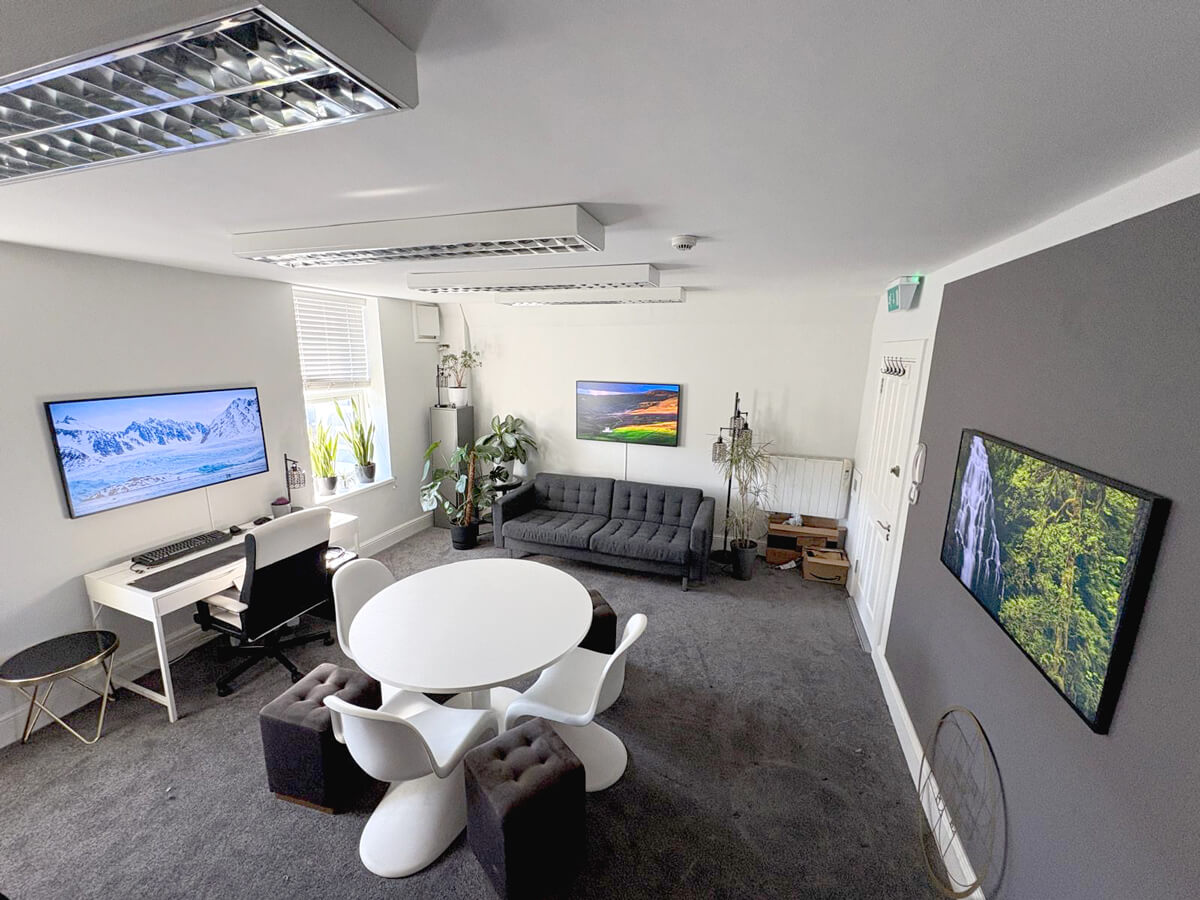Why Poor Waiting Room Design Can Hurt Your Clinic
- Healthcare
- Art & Technology

Photography by Michael Matti
Waiting rooms are vital for any healthcare facility. As one of the first touchpoints with your patients, they set the tone for future interactions with your clinic.
That’s why the quality of the waiting room interior can either enhance or downgrade the patient experience, leaving a lasting impression of the appointment and the medical center at large.
In this article, let’s explore the purpose and importance of the waiting room design in clinics, as well as the negative consequences of poor waiting room design.
What is the purpose of the waiting room in a clinic?
Let’s get back to basics. The primary purpose of the waiting room is to provide a comfortable area for the patients to calm down, pass time and prime their minds before their appointment.
Why is the waiting room design important in clinics?
The waiting room design plays a crucial role in enhancing a welcoming and calming atmosphere for patients. When thought out well, the waiting room interior can alleviate patient anxiety, promote wellbeing and improve overall satisfaction from the visit.
However, a poor waiting room interior can reverse these positive effects and inadvertently impact patient experience.
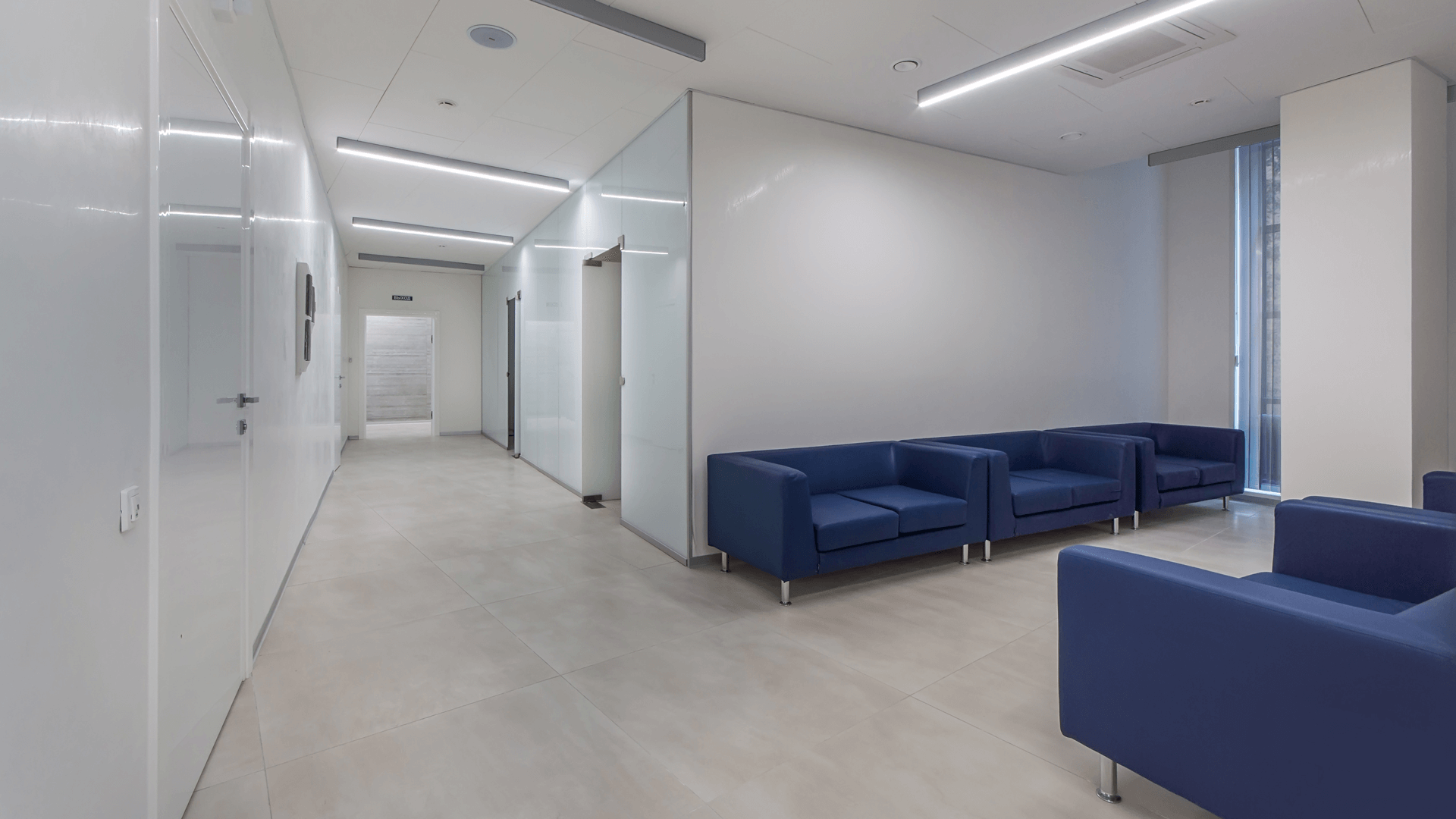
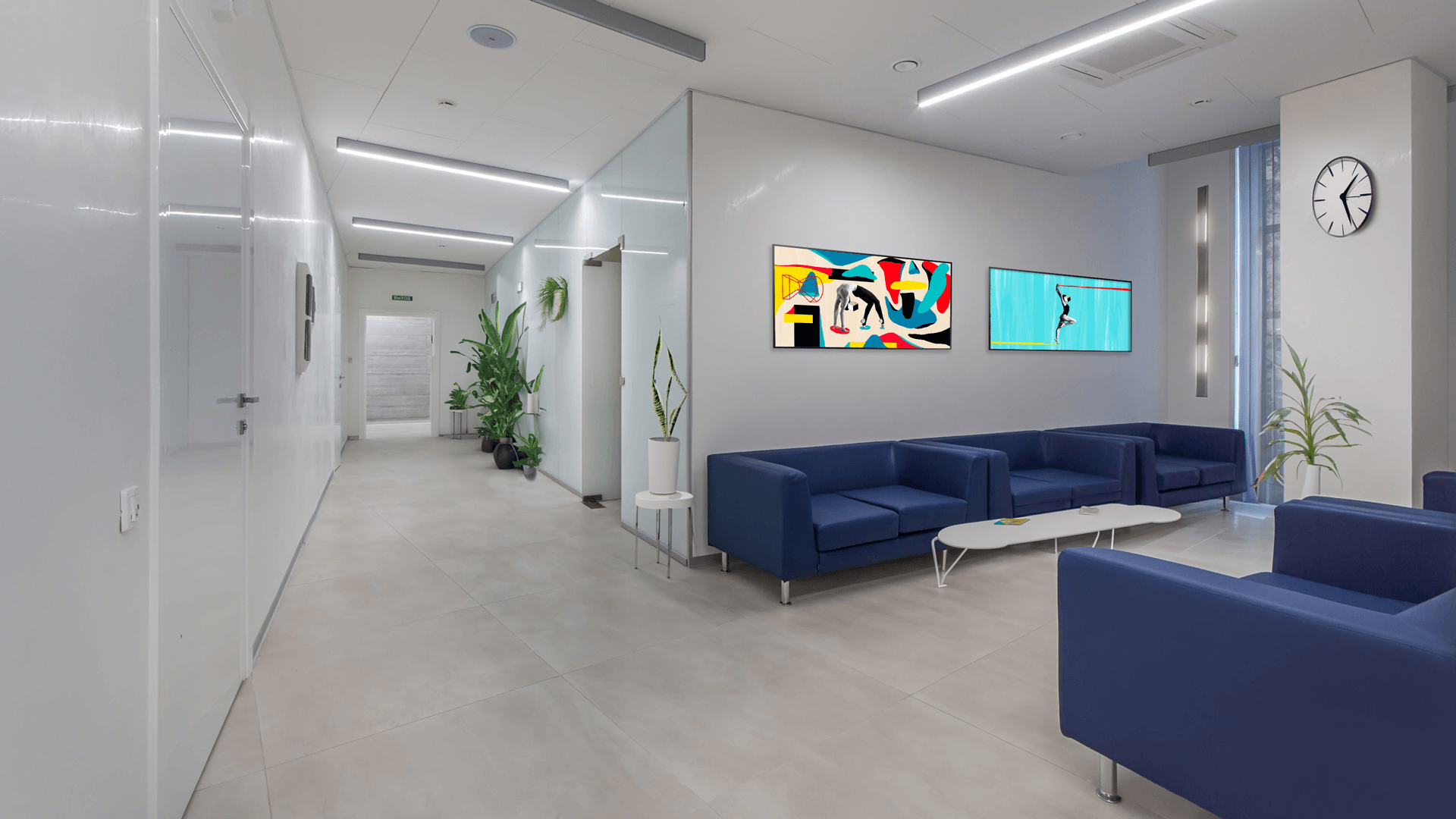
Anxious-making waiting room design (left image) vs Patient-centric waiting room design (right image)
Negative effects of poor waiting room design
1. Increased patient anxiety
It’s common (and evidence-based) knowledge that stress can make us sick and further complicate existing conditions. Poorly designed waiting rooms can contribute to increased pre-appointment stress and anxiety, impacting the success of injury rehabilitation.
2. Increased perceived wait time
3. Worsened patient complaints
Coupled with long wait times, a colorless waiting room design can only further aggressive patients. This, in turn, can lead to soaring complaints that not only unnerve other patients, but also distract the medical staff from work.
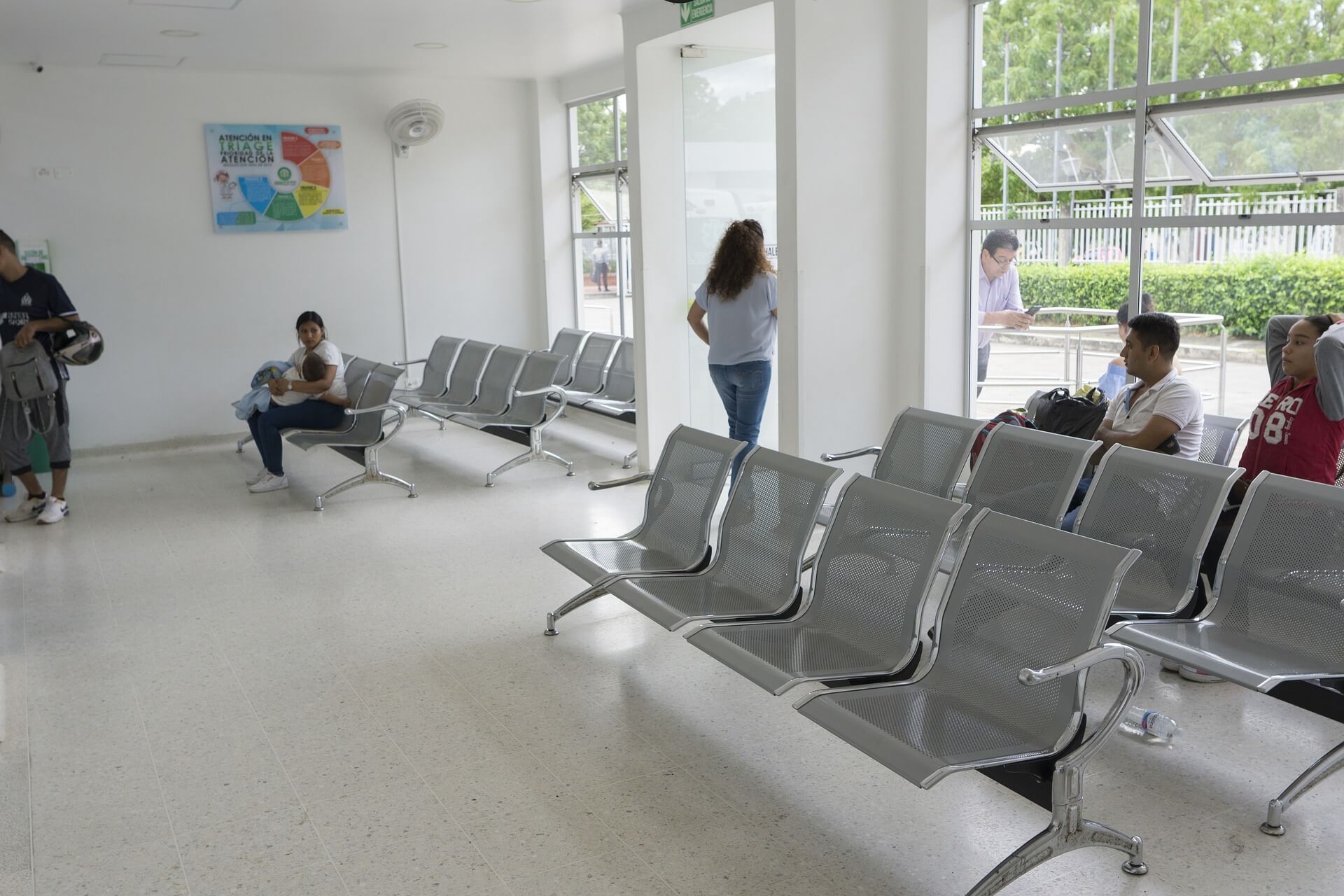
Bored patients waiting for their appointment
4. Reduced clinic ratings
A poorly-planned and uncomfortable waiting room interior can put the image of your clinic into question. When the visitors are first warmly greeted at the receptionist desk and then left to wait in the bland waiting room for a long time, it is an alarming sign for them that your center is not as patient-centric and wellness-oriented as it promises to be.
As a result, they are likely to form negative opinions about the quality of your service based on the waiting experience, which can result in negative online reviews.
4. A financial blow for clinic revenue
A whopping 63% of patients stated they would switch doctors if they were compelled to wait a long time for their appointment. Although waiting rooms can’t fully mitigate the waiting issue, the case study showed that visually interesting interior design can certainly contribute to the reduction of perceived wait time by 37%.
Waiting rooms don’t have to be universally dreadful!
A waiting room interior has a significant impact on patient experience. If designed poorly, it can lead to a number of negative consequences, from regular patient complaints to the clinic’s image. However, a well-thought-out waiting area unlocks great benefits, including reduced complaints, increased patient satisfaction, and improved word-of-mouth.
Since you’ve made it this far, it goes to show that you DO care about your patients and want to improve the services for them.
Ready to transform your clinic’s waiting room into a patient haven? Download our Free guide now and reduce perceived wait time (and complaints) in the waiting room with no additional hires or huge operational costs.
Take the first step towards happier patients and 5-star reviews.
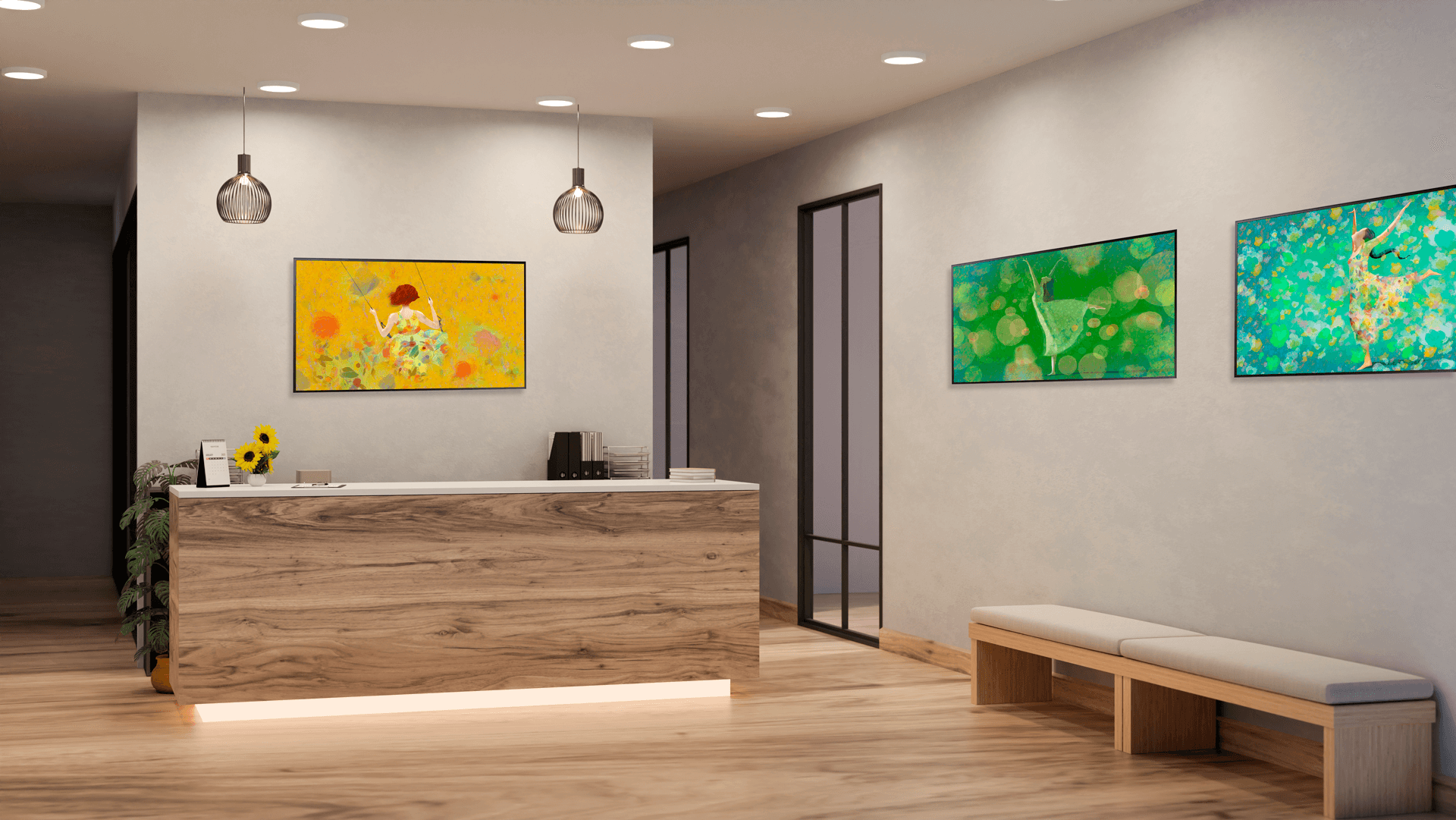
A clinic waiting room displaying WindowSight art streaming platform on TVs.
Artworks by Anna Clariana





